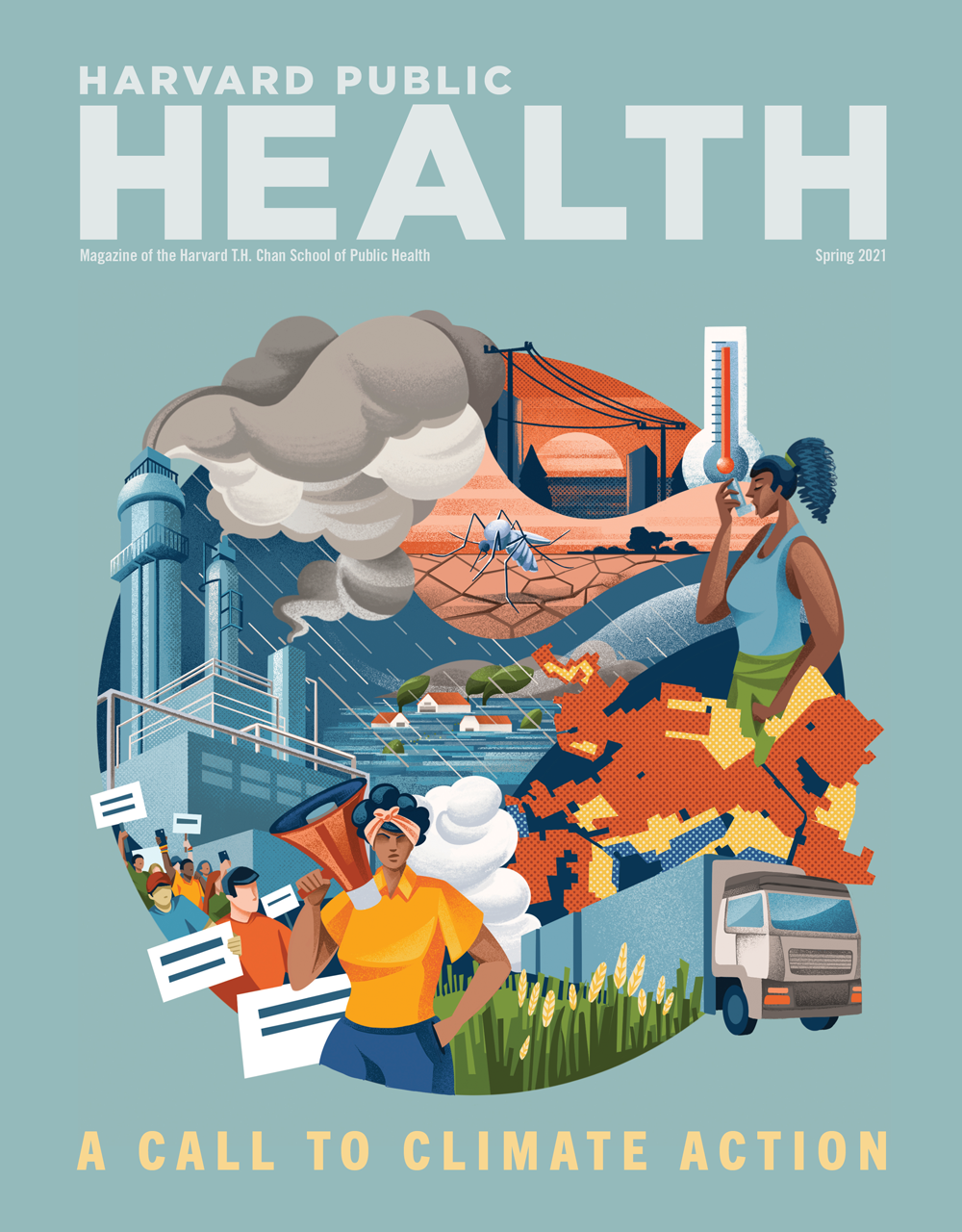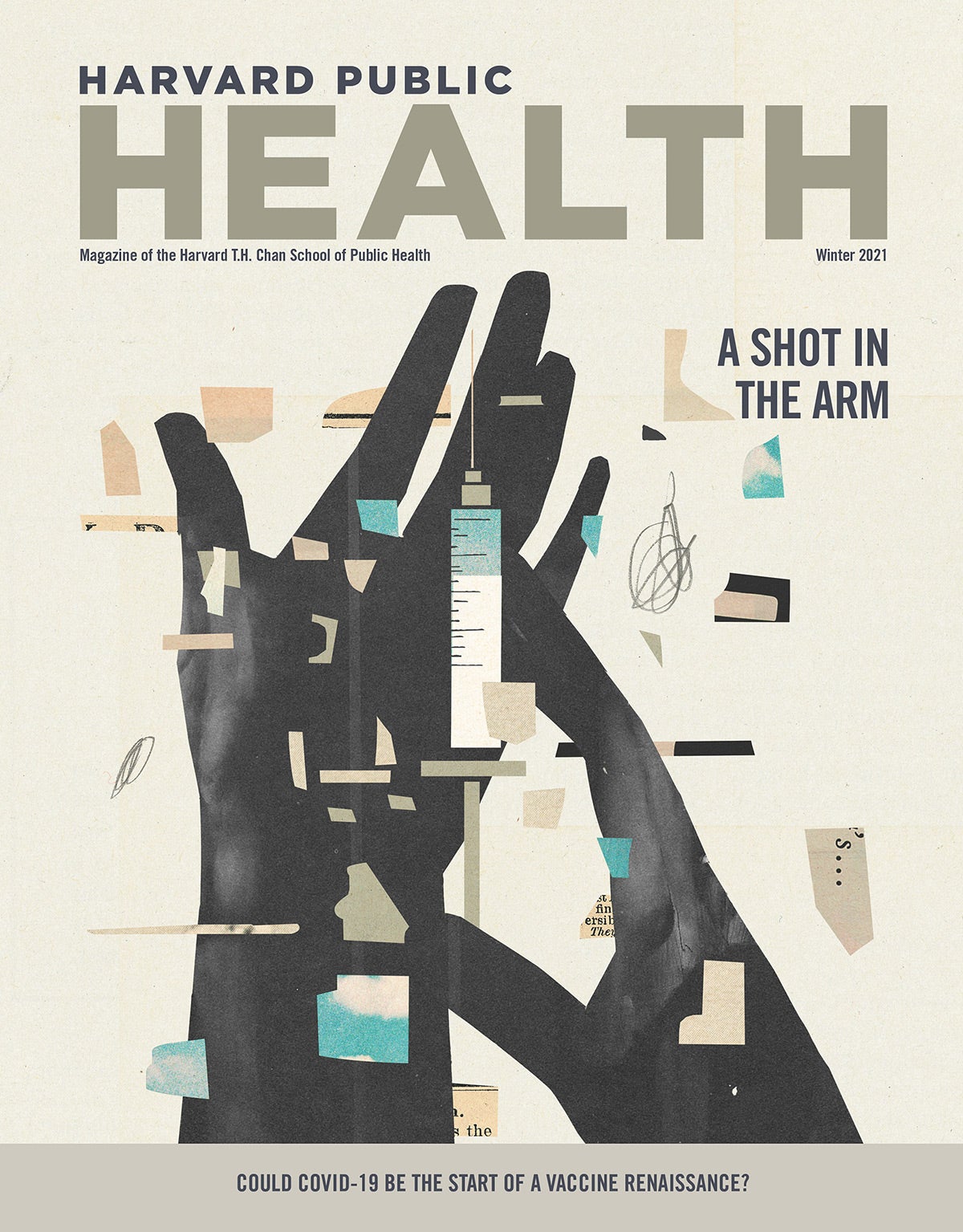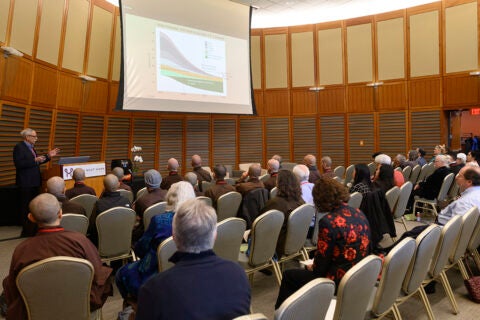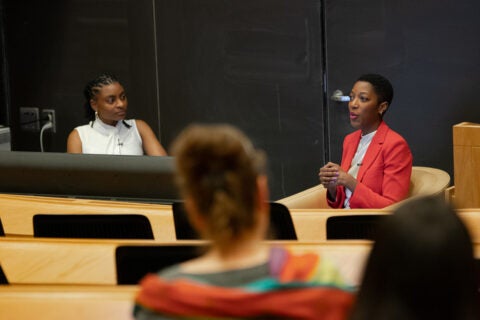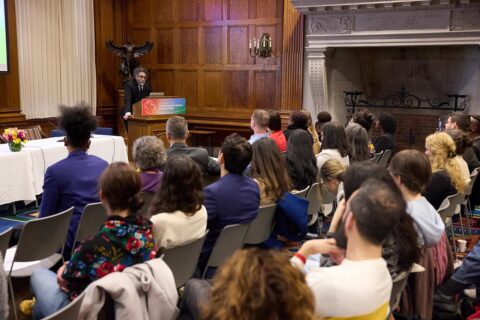One-third of the world’s population carries the tuberculosis bacterium, and some 1.5 million people die annually from the infection. What allows it to persist, even when faced with onslaughts from the immune system and drug treatments? Harvard Chan’s Sarah Fortune is looking for the answer— before rising drug resistance means it’s too late to intervene.
Most infectious diseases follow one of two clinical outcomes: A person gets infected and eventually recovers, ridding the body of the invading organism and developing immunity to future infection. Or the infection proves too formidable to overcome, with or without treatment, and the victim succumbs. But with tuberculosis, the relationship between microbe and human is a far more complicated story. When people become infected, the immune system dutifully kicks into high gear. But despite the body’s well-honed ability to vanquish invading pathogens, in TB infections a few bacteria are invariably left standing—which means that people who are infected remain infected, although usually with a latent, nonsymptomatic infection that will often never turn into full-blown disease unless the immune system is weakened.
“You have a giant pool of people carrying the organism who are at risk of developing active disease, getting sick, and transmitting it to others,” says Sarah Fortune, professor of immunology and infectious diseases at the Harvard T.H. Chan School of Public Health and a global leader in TB research. That pool significantly hinders efforts to control TB, for two reasons. First, it is difficult to distinguish people with latent disease who may be sick with an unrelated illness from those with active TB. Second, it is also hard to predict which patients with latent disease will go on to develop an active infection, posing risks not only for individual patients but also for those around them.
Compounding these clinical challenges are equally significant challenges in the laboratory. “A lot of our fundamental understanding of TB comes out of studies of the 19th and early 20th century,” says Fortune. “And frankly, a lot of our assumptions about how TB causes disease are wrong.”
AN ENDURING GLOBAL THREAT
TB is among the top 15 causes of death worldwide, killing some 1.5 million people and infecting 9.6 million annually, according to the World Health Organization. An estimated one-third of the global population carries the culprit microbe, Mycobacterium tuberculosis (Mtb), which is spread through the air. Without proper treatment, about 45 percent of HIV-negative people with active infection—and nearly all HIV-positive people who harbor the TB bacterium—will die.
“Those global numbers paint a complex picture, part of which reflects the co-epidemic with HIV/AIDS, which has been catastrophic,” says Fortune. “But that explanation is also too simplistic and neglects the fact that TB does not conform to our understanding of infection and cure in the way that many other infectious diseases do.” In Fortune’s bustling laboratory on the eighth floor of the School’s Building 1, her team of 17 graduate students, postdoctoral fellows, and research technicians wields the latest imaging equipment to visualize the microbes; employs advanced genomic methods, such as high-throughput DNA sequencing, to trace individual bacterial cells; and uses powerful mathematical tools to cut through an ever-increasing amount of genomic data to understand how both individual cells and large populations of cells respond to Mtb infection.
“RIGHT IN OUR OWN NEIGHBORHOOD”
Fortune’s path to scientific investigation was uncommonly direct. As a child in Lexington, Kentucky, she was inspired to enter medicine by her grandfather, a family physician who was called to patients’ bedsides at all hours of the day and night. But as an undergraduate at Yale University, she got a taste of biological research while working in a laboratory focused on the developing brain. “The ability to look at the world and ask relatively simple questions—and then dive into fundamental mechanisms of biology to get the answers—was exciting,” Fortune recalls.
Soon after, she witnessed the devastation wrought by TB up close. As a medical student at Columbia University in the early 1990s, Fortune found herself at the epicenter of a major outbreak of multidrug-resistant TB (MDR-TB) that spread across New York City and poured into the region’s hospitals, infecting and even killing several health care workers. Coinciding with New York’s MDR-TB crisis was the emergence and explo- sion across the U.S. of HIV, the virus that causes AIDS. The devastation of those twin outbreaks was on par with what is often now seen in parts of the developing world. “The reality of global TB was playing out right in front of our eyes, right in our own neighborhood,” Fortune says.
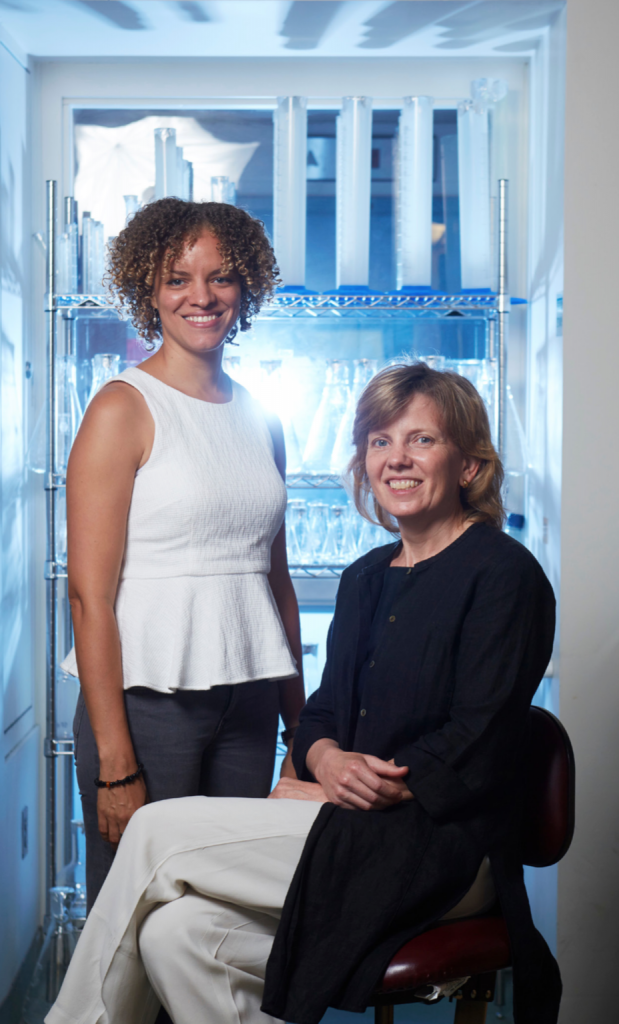
—Sarah Fortune, professor of immunology and infectious diseases (seated at right), with lab member Jemila Kester, PhD ’17
The drugs available to treat MDR-TB were, and still are, highly toxic. One destroys the vestibular system in the ear that helps the body maintain balance. Another can trigger psychosis. Yet another literally turns patients’ skin blue.
Put simply, advances on the clinical side of TB have not kept up with the toll. “I have a love of the underdog,” says Fortune. “It drives me crazy that TB kills so many people and we invest so little in trying to come up with solutions—when it is a solvable problem.”
BACTERIA AS INDIVIDUALS
Fortune’s experiences with TB in the hospital wards inspired her interest in studying the disease in the lab and forged her career path. Her guiding scientific question: What makes the TB bacterium such a hardy survivor?
One key insight is that, as a group, Mtb cells are not homogeneous. While most cells in a bacterial population are susceptible to killing by the immune system or by drugs, there are a few specialized “survivors” that constitute the group’s contingency plan—the “go-to” cells when the going gets tough. Fortune believes these rare, specialized cells account for why TB treatments are so protracted—a six-month course of antibiotics is needed to contain the disease—and also why developing an effective TB vaccine has proven so elusive.
Fortune’s laboratory seeks to understand how the TB contingency cells form in the first place. Biologically speaking, there are a few possibilities. The cells could vary genetically, through changes to their DNA. They could also differ as a result of variations in their epigenome, a chemical code embedded within DNA that determines when and where certain genes get switched on or off. Or they could be programmed through molecular differences set in motion by a key group of regulators called transcription factors.
A MOLECULAR BOMB SHELTER
This concept of bacterial individuality signals a stark departure from the picture of Mtb as a monolithic foe, an idea commonly held as recently as a decade ago. Imagine a caveman, Fortune says: “I’m going to hunker down, I’m not going to do very much, and that is how I am going to survive.” The idea made sense because Mtb is coated with an unusually tough outer shell made of wax—a kind of molecular bomb shelter that can protect against the threat of the immune system and drugs.
Fortune and her team have since shown that these presumed do-nothing microbes are in fact highly sophisticated. Unlike most cohabiting bacteria, which each perform the same functions for individual gain, Mtb adopt distinct roles in service of the entire group, making them more like a colony of bees than a colony of bacteria.


